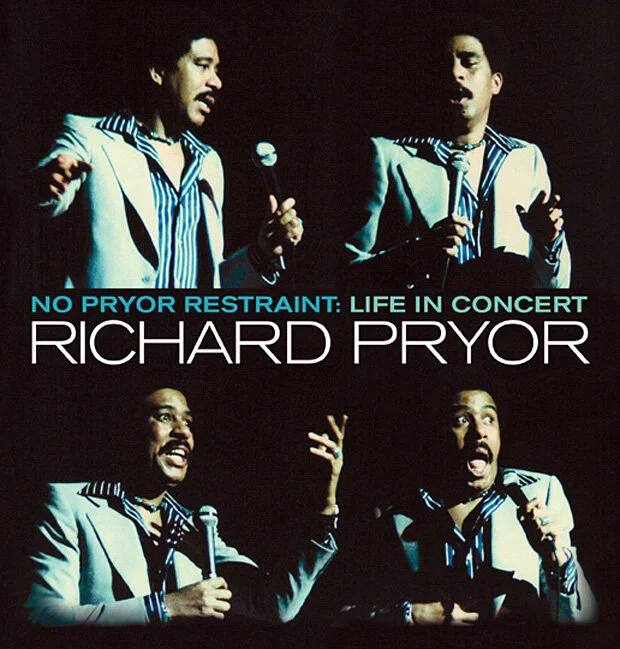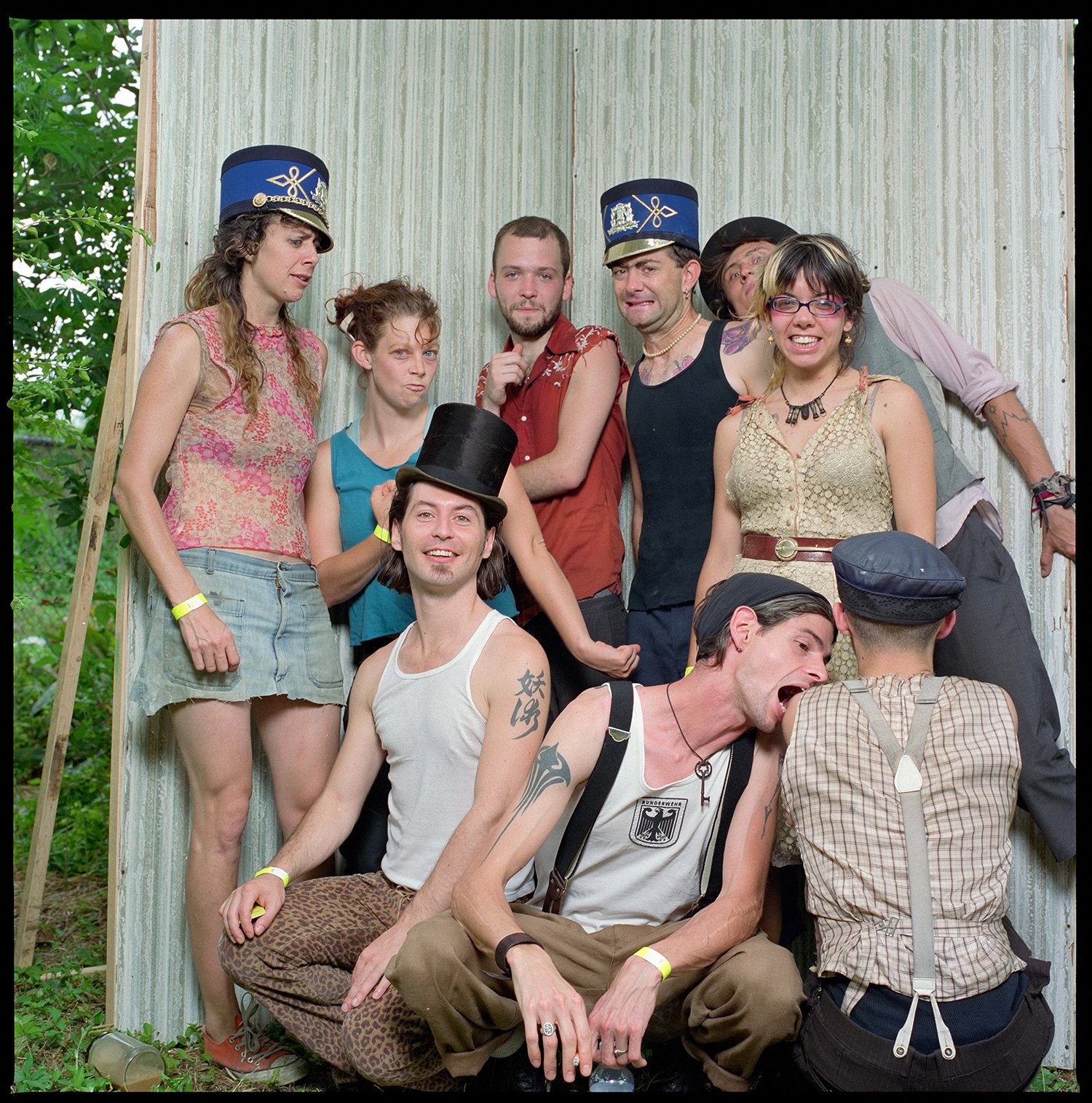Richard Pryor's Life on Stage

"No Pryor Restraint" documents the comedian's personal and professional journey over the course of nine discs.
No Pryor Restraint: Life in Concert is packaged like a book, and the 7-CD, 2-DVD set has a novelistic scope. It starts by presenting a green Richard Pryor onstage at The Hungry I in San Francisco in 1966 sweating for laughs. He had yet to find his own comedic voice and timidly asks the audience to help set up the situation for some improv - a request that doesn't get the enthusiastic response he would receive only two years later. Fairly quickly, he found his theme, though. Because Pryor spent so much of his career anatomizing race relations, it's easy to to think of racism as his subject, but in 1968, he riffed on army life, and the piece is revealing as it suggests that power was his real target. Racism was simply the most common, enduring, brainless exercise of power in his life, but in 1979's Richard Pryor in Concert, he portrays his heart as a bully, flattening him for appealing to God for help in the middle of a heart attack. Thinking about power as Pryor's subject matter helps explain the changes to his comedy later in his career: how could he critique power and not recognize his own? In a bit cut from Richard Pryor in Concert, he meditated on success, mortality, and their effect on his comedy. "I don't know who I am anymore," he says. "I ain't mad at nobody. My anger's so different. I tried to be angry, but I don't know what to be mad about. I'm alive."
Pryor dealt with the changes in his life honestly. Famously, he spent 20 to 30 minutes of 1982's Richard Pryor Live on the Sunset Strip on setting himself on fire while freebasing. In another bit of similar vintage, he reveals his ambivalence toward his place in the world by responding, "I don't give a fuck" to a host of situations, both mundane and meaningful. The bit is funnier than the line on paper as he gives the phrase its own cadence and inflection, then repeats it in circumstance after circumstance to cumulative effect.
His ability to give distinctive voices to characters was an underrated part of Pryor's genius. Anything and anyone he spoke for was given idiosyncratic, personal speech patterns and voices. When he remembered the guys he grew up with in "The Hippy Dippys," each was an individual as Pryor dramatized them. He presented everybody who showed up in his stories with compassion, so much so that one, Mudbone, became a character that endured throughout Pryor's career. When he spoke in the voice of White America, he rarely if ever did so as a dumb yokel or angry redneck. Instead, he presented the point of view of uptight middle Americans, as anxious in their own way about their place in the world as African Americans.
In the period from 1971 to 1978, No Pryor Restraint presents Pryor as a ghetto prince. He confronted white America largely by ignoring it, focusing instead on the lives he shared with his audience. When it showed up, it was as something laughable. Pryor's vocabulary did have a political dimension though, as it drew lines between us and them. He used language that white Americans knew wasn't theirs to use, language that spoke clearly to the target audience that loved him and unsettled those who were just starting to think through the implications of word choices.
In those years, there's a vitality and swagger in Pryor's performance that's compelling. Richard Pryor - Live in Concert includes an account of an arrest after a New Year's Eve party that gets out of control, but an alternative version of the story on one of the CDs is longer, looser, and more compelling as the story is more complex. At full length, his own indulgences become part of the story, as does his fame and how it affects those around him. And at full length, he has time to work up some momentum that helps the tale roll through some awkward laughs.
Richard Pryor Live on the Sunset Strip could be seen as his artistic peak because Pryor's scope had broadened. He was older, and he had experiences that helped him speak to more people than ever without losing his honesty. His language was less exclusionary, and the Los Angeles audience was clearly racially mixed. The humanity that had always underscored his comedy was clearest in the film because it was expressed in terms everybody could connect to. But it wasn't just a victory lap. Pryor had something to prove. By that point, he had become a movie star, and not just as countercultural figure. He had starred in Silver Streak, The Wiz, California Suite, The Muppet Movie, Stir Crazy, The Toy, and Superman III. Despite a stand-up career built on the word "motherfucker," he was considered family-friendly in Hollywood, and it's hard to imagine that that truth didn't force him to see how brave and real he could be.
The final film, Richard Pryor … Here and Now, is the one that feels like a victory lap. It was shot at the Saenger Theater in 1983, and while he's reliably funny, there's no set piece that jumps out, no fresh ground broken. In fact, one of the funniest things about the movie is that nobody, not even Richard Pryor, can get New Orleanians to act right. They keep trickling in as he tries to get his act started, and he can't keep them still.
There's a short section of Richard Pryor … Here and Now shot in a club, and it recalls The Hungry I and the clubs and coffeehouses he started in, but he had learned to be himself onstage in a way that he wasn't in 1966. The laughs were easy, partly because the crowd was pre-sold for Pryor in a way that audiences weren't 15 or so years earlier, but also because he'd discovered how to be an open version of himself that invited people to join him. At the end of nine discs, it's impressive because he's still funny, even if the movie feels anti-climactic after what had come before. His comedy softened the edges, but Pryor went through addiction, crime, jail, and near-death experiences, and each time came out with his love of humanity intact. Nothing was easy, but he transformed it all into something funny.






